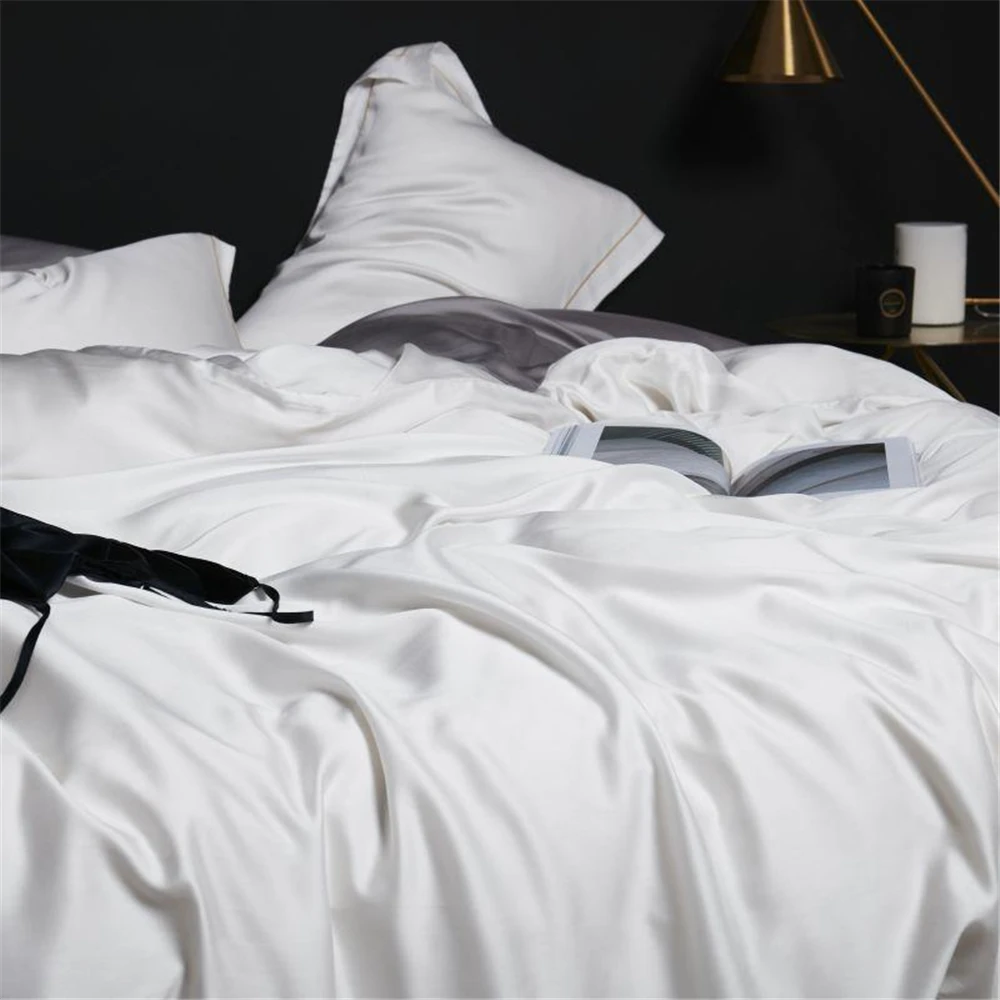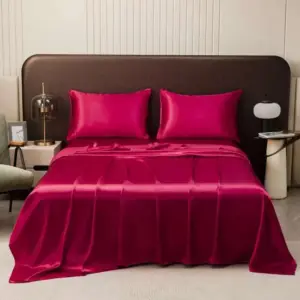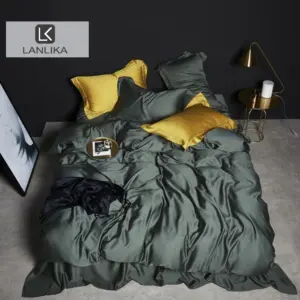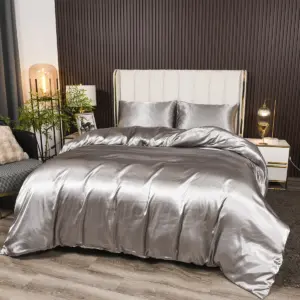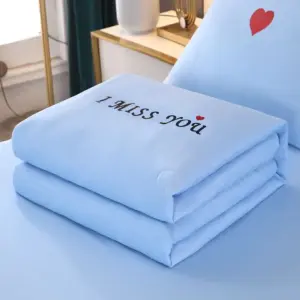Introduction: The Secret Language of Silk Quality
When it comes to luxury fabrics, silk stands in a class of its own. But how do you determine true silk quality? While many shoppers understand cotton’s thread count, silk has its own unique measurement system: momme weight. This key metric unlocks the secret to making informed silk purchases.
Definition Box:
Momme (pronounced “mom-ee”) is a traditional Japanese unit that measures the weight and density of silk fabric. It indicates how much silk material is used per specific area, directly correlating with quality, durability, and feel.
Think of momme as silk’s equivalent to thread count in cotton—but specifically designed to address silk’s distinctive properties. Unlike cotton’s uniform fibers, silk’s natural protein filaments vary in diameter and structure, requiring a measurement system that captures these unique characteristics.
Every aspect of silk—from its opacity and durability to its price—relates directly to its momme weight. Understanding this measurement doesn’t just help you recognize quality; it empowers you to select the perfect silk for your specific needs.
“Momme weight is the single most important objective measure of silk quality,” notes textile expert Dr. Emily Chen. “It’s the first specification any discerning silk buyer should look for.”
Throughout this guide, you’ll discover exactly how momme affects silk quality, which weights work best for different products, and how to ensure you’re getting the value you deserve when investing in amazing benefits of Mulberry silk sheets.
What is Momme Weight in Silk Fabric?
Momme weight (abbreviated as “mm”) represents the weight in pounds of a piece of silk fabric measuring 45 inches wide by 100 yards long. In simpler terms, it tells you how much silk material is packed into a specific area.
In metric measurements, 1 momme equals approximately 4.34 grams per square meter. This standardized measurement originated in Japan, where silk production has been refined over centuries, and has since become the international standard for evaluating silk fabric density.
When manufacturers determine momme weight, they use precise equipment to weigh carefully measured silk samples under controlled conditions. This standardization helps ensure consistency across the industry, although some variation in measurement techniques can exist between producers.
Many consumers mistakenly believe momme relates to thread count or thickness alone, but it’s actually a more comprehensive measurement capturing both the density of threads and the thickness of individual silk fibers.
To put this in perspective, a 100-yard length of silk (the standard measurement length) would stretch across an entire football field and beyond. The weight of this substantial piece of fabric, in pounds, gives us the momme number.
This measurement system has proven remarkably resilient and useful over time, providing consumers with a reliable indicator of what to expect from the complete guide to Mulberry silk bed sheets and other silk products.
Why Momme, Not Thread Count, for Measuring Silk Quality
When shopping for cotton sheets, thread count reigns supreme as the quality indicator. So why does silk use an entirely different measurement system? The answer lies in silk’s unique physical structure.
Silk consists of continuous protein filaments with natural variations in diameter. A single silk filament can stretch unbroken for hundreds of yards—fundamentally different from cotton’s shorter fibers that must be spun together. This structural difference makes thread count an inappropriate measurement for silk.
Applying thread count to silk can actually mislead consumers. Two silk fabrics could have identical thread counts yet drastically different qualities depending on the thickness of each filament. Momme captures both the quantity and quality of silk material present.
Consider this example: a lightweight 12 momme silk and a luxurious 25 momme silk might both claim a thread count of 400, but the experience of using each fabric would be dramatically different. The 25 momme fabric contains significantly more silk material per square inch, resulting in greater durability, opacity, and often a more luxurious feel.
Momme weight provides a holistic quality indicator by accounting for:
- Total silk content per area
- Density of the weave
- Thickness of individual silk threads
- Overall fabric weight
This comprehensive measurement gives consumers a much more accurate understanding of what they’re purchasing than a simple thread count ever could. Learning about the differences between momme vs. thread count in silk helps buyers make more informed decisions.
How Momme Influences Silk’s Physical Properties
The momme weight of silk directly influences numerous physical properties that affect how the fabric performs and feels. Understanding these connections helps explain why certain momme weights work better for specific applications.
Weight and Thickness
Higher momme silk contains more silk material per square inch, creating a heavier and thicker fabric. A 30 momme silk pillowcase will feel substantially more substantial in hand than a 19 momme version. This added weight creates a more substantial drape and often a greater sense of luxury.
Durability and Strength
The relationship between momme and durability is generally direct—higher momme silk tends to wear better over time. The additional silk material provides more resistance to friction, helping these fabrics maintain their beauty through more wash cycles and years of use.
Opacity and Coverage
Lower momme silk (below 16mm) often displays some degree of transparency. As momme weight increases, silk becomes increasingly opaque. This matters particularly for bedding and garments where privacy and light-blocking are concerns.
Drape and Movement
The way silk moves and flows changes with momme weight. Lighter silks (6-12mm) create ethereal, floating movement ideal for scarves and delicate garments. Heavier silks (22mm+) produce a more dramatic, structured drape preferred in home décor and formal attire.
Texture and Hand Feel
While all natural silk feels luxurious, momme weight creates subtle differences in tactile experience. Lower momme silk often feels whisper-light and delicate, while higher momme silk provides a more substantial, plush sensation against the skin.
Insulation and Temperature Regulation
Silk naturally regulates temperature, but momme weight affects this performance. Higher momme silk provides more insulation in cold weather while still allowing airflow for breathability. This makes various weights appropriate for different seasons and climates.
These property differences explain why Mulberry silk sheets come in various momme weights—each offers distinct benefits that might appeal to different sleepers.
The Relationship Between Momme and Silk Quality
While momme weight strongly correlates with silk quality, the relationship isn’t quite as simple as “higher equals better.” Momme represents an important quality factor, but it works alongside other variables to determine overall silk excellence.
Higher momme generally indicates more silk material per area, which often translates to greater durability and a more luxurious feel. This additional material directly impacts production costs—more silk means more expense—which explains why higher momme products typically command premium prices.
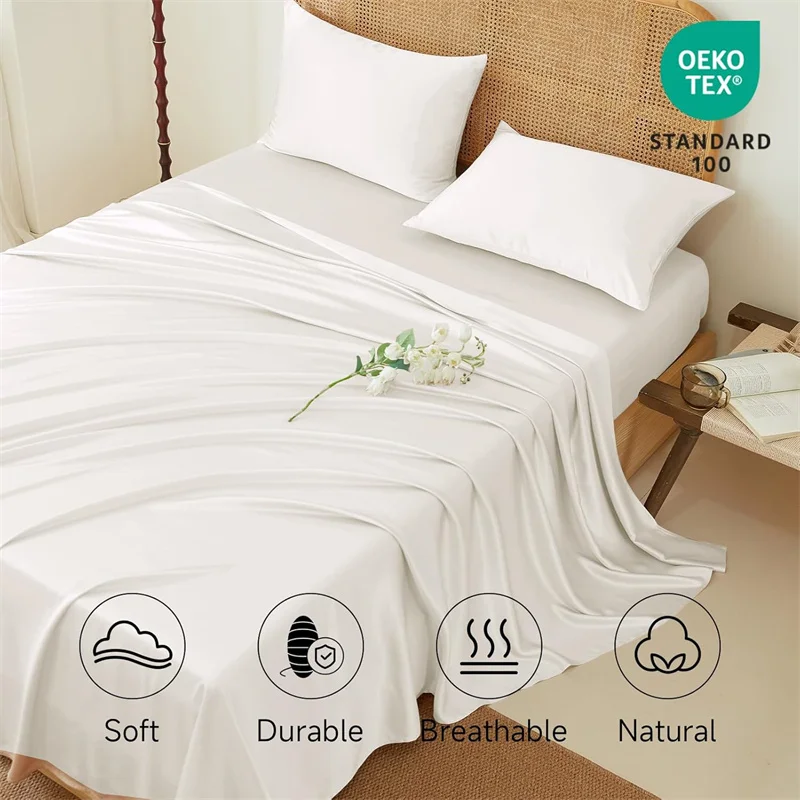
However, several other factors work alongside momme to determine true silk quality:
- Silk source: Mulberry silk is considered superior to other varieties
- Harvesting methods: Hand-reeled silk often preserves longer filaments
- Weaving technique: Craftsmanship in construction affects durability
- Finishing processes: How the silk is treated affects its final feel
- Dye quality: Superior colorants maintain vibrancy longer
- Production standards: Ethical and environmental practices
A well-made 19 momme silk sheet from quality Mulberry silk may outperform a poorly constructed 25 momme product from inferior silk sources. Momme provides an objective starting point, but savvy consumers should look beyond this single number.
Understanding how momme affects silk softness helps consumers make more nuanced purchasing decisions based on their specific preferences and needs rather than simply chasing the highest number.
Momme Weight Classifications: From Lightweight to Heavy Silk
Silk fabrics typically fall into distinct weight categories, each with characteristic properties that make them suitable for different applications. Understanding these classifications helps match the right silk weight to specific needs.
Lightweight Silks (3-12 momme)
- Characteristics: Delicate, sheer, ethereal, highly breathable
- Typical Uses: Scarves, lingerie, summer garments, decorative overlays
- Benefits: Exceptional drape, floaty movement, cool feel
- Limitations: Limited durability, requires gentle handling, more transparent
Medium-Weight Silks (14-22 momme)
- Characteristics: Balanced durability and flow, moderate opacity
- Typical Uses: Blouses, dresses, ties, lighter bedding, curtains
- Benefits: Versatility, good drape with reasonable durability
- Limitations: May require lining for garments, moderate lifespan
Heavyweight Silks (25-30+ momme)
- Characteristics: Substantial feel, excellent durability, full opacity
- Typical Uses: Luxury bedding, upholstery, winter garments, formal attire
- Benefits: Long-lasting, rich drape, insulating properties
- Limitations: Less fluid movement, higher cost, possibly too warm for summer
The optimal weight category depends entirely on the intended application. A lightweight silk makes a beautiful summer scarf but would quickly wear through as bedding. Similarly, a heavyweight silk creates luxurious, durable sheets but might feel too stiff for a flowing summer dress.
When browsing 100% silk sheets, you’ll typically find them in the medium to heavyweight categories, balancing durability with comfort for everyday use.
Momme Ranges for Popular Silk Weaves and Fabrics
Different silk fabric types naturally lend themselves to specific momme ranges based on their weave structures and intended uses. Here’s how common silk varieties align with momme weights:
| Silk Type | Typical Momme Range | Characteristics |
|---|---|---|
| Charmeuse | 16-30mm | Smooth face, textured back, lustrous, most common for bedding |
| Habotai | 5-12mm | Lightweight, smooth, versatile “China silk” |
| Crêpe de Chine | 12-20mm | Slightly textured, matte finish, elegant drape |
| Chiffon/Georgette | 6-12mm | Very sheer, light, airy texture |
| Duopioni/Raw Silk | 20-40mm | Textured, irregular slubs, rustic appearance |
| Satin Weaves | 16-30mm | Glossy face, dull back, luxurious sheen |

Charmeuse silk, with its characteristic smooth face and textured back, dominates the bedding market due to its elegant drape and comfort against skin. For bedding applications, manufacturers typically use charmeuse in the 19-30mm range to balance luxury with practical durability.
Lightweight fabrics like chiffon remain intentionally sheer, making them perfect for layering in fashion but impractical for bedding. At the opposite extreme, raw silk varieties like duopioni can reach up to 40mm, creating textural interest but a less smooth sleep surface.
The specific weave pattern interacts with momme weight to create the fabric’s final character. For example, a 19mm charmeuse will feel and perform differently than a 19mm crepe de chine despite having identical weight measurements.
Sanctuary Soft primarily utilizes high-quality charmeuse for their Mulberry silk pillowcases to provide the optimal balance of luxurious feel and practical durability.
Recommended Momme Weights for Common Silk Products
Different silk products perform best at specific momme weights based on their intended use and wear patterns. Here are optimal momme ranges for popular silk items:
Silk Bedding Products:
Pillowcases: 19-25mm
– 19mm: Excellent balance of softness and value, suitable for most sleepers
– 22mm: Enhanced durability for regular use, improved opacity
– 25mm: Premium luxury feel, maximum lifespan, ideal for daily use
Sheets: 19-30mm
– 19mm: Good entry-level quality, lightweight comfort
– 22-25mm: Optimal balance of durability and comfort for most users
– 28-30mm: Maximum luxury and longevity, preferred by luxury hotels
Duvet Covers: 22-30mm
– 22mm: Standard weight with good drape
– 25-30mm: Improved durability to withstand frequent washing
Sleep Masks: 16-22mm
– 16-19mm: Comfortable lightness while blocking light
– 22mm: Added durability for travel and frequent use
Silk Apparel:
Blouses and Tops: 12-19mm
– 12-15mm: Lighter drape for flowing styles
– 16-19mm: Better opacity for professional wear
Dresses: 8-22mm
– 8-12mm: Summer dresses, lightweight feel
– 14-22mm: Formal wear, better structure and opacity
Pajamas and Loungewear: 16-22mm
– 16mm: Lightweight comfort for warm sleepers
– 19-22mm: Improved durability and opacity
Scarves and Accessories: 5-16mm
– 5-8mm: Sheer, gossamer effect
– 10-16mm: More substantial feel, better drape
When shopping for silk sheets, the 19-25mm range hits the sweet spot for most consumers—providing excellent durability without reaching the highest price points of ultra-premium weights.
Full-size Silk Sheets, King Size Silk Sheets, Queen Size Silk Sheets, Twin Size Silk Sheets, Washable Silk Sheets
Price range: $95.95 through $178.37 Select options This product has multiple variants. The options may be chosen on the product page100% Silk Sheets, Green Silk Sheets, King Size Silk Bedding Set, Mulberry Silk Bedding Sets, Queen Size Silk Bedding Set
Price range: $1,246.21 through $1,615.22 Select options This product has multiple variants. The options may be chosen on the product pagePink Silk Sheets, Twin Size Silk Sheets
$171.80 Select options This product has multiple variants. The options may be chosen on the product pageFull-size Silk Sheets, Pink Silk Sheets
$136.31 Select options This product has multiple variants. The options may be chosen on the product pageGrey Silk Sheets, Silk Sheet and Pillowcase Set
Price range: $88.20 through $146.64 Select options This product has multiple variants. The options may be chosen on the product pageBamboo Silk Sheets, Cooling Silk Sheets
Price range: $130.76 through $177.80 Select options This product has multiple variants. The options may be chosen on the product page
Is Higher Momme Always Better? The Right Weight for Your Needs
One of the most common misconceptions about silk is that higher momme automatically equals better quality. The truth is more nuanced—the “best” momme weight depends entirely on your specific needs and preferences.
When lighter momme silk might be preferable:
- Warm environments: Lower momme silk (12-16mm) provides better breathability for hot sleepers or summer use
- Sheer effects: Fashion applications often deliberately use lightweight silk for its ethereal transparency
- Fluid drape: Lighter silks create more movement and flow in garments
- Budget considerations: Lower momme can provide authentic silk benefits at more accessible price points
When heavier momme silk offers advantages:
- Durability requirements: Higher momme (22mm+) withstands more washing and use over time
- Opacity needs: Bedroom privacy and light-blocking call for denser silk
- Luxury feel preferences: Some users prefer the substantial hand feel of heavier silk
- Cold environments: Higher momme provides better insulation in cooler climates
The key is matching momme weight to your specific situation. A hot sleeper in Florida might find 19mm silk sheets perfect, while someone in Minnesota might prefer 25mm for winter warmth. Similarly, your personal definition of luxury might favor either lightweight breathability or substantial plushness.
Rather than focusing solely on getting the highest number, consider what aspects of understanding silk momme weight matter most for your specific application and preferences.
How Momme Weight Affects Silk Care and Maintenance
Silk’s momme weight significantly influences how the fabric should be cared for and how it responds to cleaning and maintenance. Understanding these differences helps preserve your silk investments regardless of weight category.
Higher momme silk (22mm+) generally demonstrates greater resilience during cleaning. The additional silk material provides more structural integrity, making these fabrics somewhat more forgiving of minor care mistakes. However, all silk requires gentle handling regardless of weight.
Care Considerations by Momme Weight:
- Lightweight Silk (under 15mm):
- Hand washing strongly recommended
- Air drying away from direct sunlight
- Requires extra gentle handling when wet
More susceptible to snags and pulls
Medium-Weight Silk (16-22mm):
- Gentle machine washing possible (mesh bag, silk-specific detergent)
- Low-heat iron on reverse side if needed
- Moderate resistance to wrinkles
Good colorfastness with proper detergent
Heavyweight Silk (25mm+):
- Better tolerance for gentle machine washing
- More resistant to wrinkles and creasing
- Superior color retention through multiple washes
- Less prone to water staining
While higher momme silk generally requires less delicate treatment, all silk benefits from:
– Washing in cool water
– Using pH-neutral detergents
– Avoiding bleach and fabric softeners
– Storing away from direct sunlight
– Addressing stains immediately
These care differences make heavier momme weights particularly desirable for frequently used items like luxury silk bedding sets, where regular cleaning is necessary and durability becomes a priority.
How to Verify the Advertised Momme Weight
With silk’s premium pricing, ensuring you receive the advertised momme weight becomes important. While precise measurement requires specialized equipment, several simple tests can help confirm whether a product matches its momme claims:
Visual Assessment
Hold the silk up to a light source. Higher momme silk (22mm+) appears more opaque, while lower weights show greater transparency. If a product claiming 25mm allows you to clearly see objects through it, the momme claim may be exaggerated.
Weight Comparison
If possible, compare multiple silk items of the same size but different claimed momme weights. You should be able to feel a noticeable difference in weight—a 25mm pillowcase should feel distinctly heavier than a 19mm version of the same size.
Tactile Evaluation
Rub the fabric between your fingers. Higher momme silk typically feels more substantial and dense, while lower momme feels more delicate. With experience, you can develop a “feel” for different momme weights.

Red Flags for Misrepresentation
Be wary when:
– The price seems too good to be true for the claimed momme
– Marketing emphasizes thread count over momme for silk bedding
– Product descriptions use vague terms like “heavyweight” without specifying momme
– The product feels unexpectedly thin or light for its claimed weight
Reputable silk retailers will clearly state momme weight and stand behind their quality claims. When browsing options like silk pillowcases, transparency about momme weight often indicates a trustworthy manufacturer.
Frequently Asked Questions About Silk Momme Weight
What is the best momme for silk pillowcases?
For pillowcases, 19-25 momme provides the optimal balance of durability and comfort. The 19mm weight offers excellent value with good longevity, while 22-25mm provides enhanced durability and a more luxurious feel for those willing to invest more.
Is 19 momme silk good quality?
Yes, 19 momme silk represents excellent quality and serves as the standard for many premium silk products. It offers a balance of durability, comfort, and value that makes it popular for bedding and garments. While not the heaviest option available, 19mm silk provides substantial benefits.
How can I tell the momme of a silk fabric?
Without specialized equipment, you can estimate momme by assessing opacity (hold it up to light), comparing weight (heavier means higher momme), and evaluating thickness between your fingers. Experience with different momme weights will improve your ability to gauge by touch.
Does momme affect the softness of silk?
Momme indirectly affects perceived softness. While the inherent smoothness of silk comes from its fiber structure, higher momme silk often feels more substantial and luxurious against the skin. However, finishing processes and silk quality also significantly impact softness.
Can you wash silk with a high momme count?
Higher momme silk (22mm+) typically withstands gentle washing better than lighter weights due to its increased durability. Many 22-30mm silk items can be machine washed on delicate cycles with appropriate silk detergent, though hand washing remains gentlest for all silk.
How does momme affect breathability and temperature regulation?
All silk offers natural temperature regulation, but momme affects the degree. Lighter momme silks (12-19mm) provide maximum breathability for hot sleepers or warm environments. Higher momme silks (22mm+) offer more insulation in cooler conditions while still allowing airflow.
Why is silk measured in momme instead of other units?
The momme system originated in Japan and provides an accurate way to measure silk’s unique properties. Unlike cotton’s uniform fibers, silk’s variable filament thickness makes thread count an inadequate measure. Momme captures both density and weight in one standardized measurement.
Understanding these good momme rating for silk standards helps consumers make informed decisions when investing in quality silk products.
The Sanctuary Soft Difference: Our Approach to Silk Quality
At Sanctuary Soft, we focus specifically on premium 19-25 momme Mulberry silk products. This carefully selected range represents our commitment to the optimal balance between luxurious quality and practical durability for everyday use.
Each Sanctuary Soft silk product undergoes rigorous testing for strength, color consistency, and tactile quality. Our quality control process includes both objective measurements and subjective evaluation by experienced textile specialists who understand the subtle nuances of exceptional silk.
We’ve chosen the 19-25 momme range after extensive research and customer feedback. This range delivers:
- Excellent durability through regular washing and nightly use
- Luxurious hand feel that enhances the sleeping experience
- Sufficient opacity for privacy and light filtering
- Optimal temperature regulation for year-round comfort
Our commitment to quality extends beyond momme weight alone. The inherent properties of what makes Mulberry silk special combine with our careful manufacturing processes to create products that truly enhance your sleep experience through both luxury and functionality.

